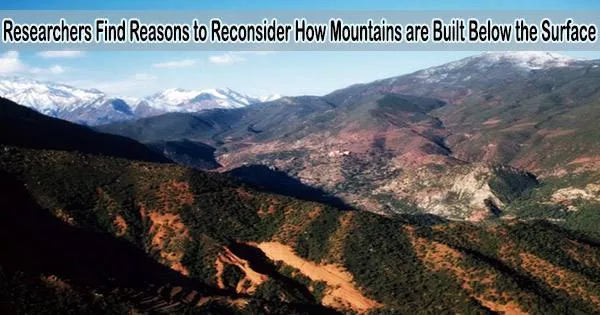According to a study conducted by Colorado State University, the explanations for how and why mountains arise are more deeply hidden than previously believed.
“Mountain building is a fundamental process of how Earth behaves,” said Sean Gallen, lead author and CSU assistant professor of geosciences, “and this study suggests that we may not understand that as well as we thought we did.”
In order to use landscapes to recreate lengthy histories of mountain construction in southern Italy, Gallen and his team developed new data sets and methodologies. Their novel approach yielded some “confounding” results, according to Gallen.
One tectonic plate plunges beneath another in subduction zones, such as the one in Calabria in southern Italy. The crumpling and thickening of the Earth’s crust is thought to have played a role in the formation of the mountains in these regions.
The researchers integrated data from observations that captured geologically short and long periods, ranging from thousands of years to tens of millions of years. Like a “geologic tape recorder” of the tectonic history, the landscape filled in the rest.
“In southern Italy, the landscape actually is the bridge between these different methods that we typically use,” Gallen said.
The flat, high-elevation landscape regions along the Italian peninsula’s “toe” indicate a period of gradual mountain creation, while the sharp transition below denotes a period of fast acceleration. The scientists were able to create the longest and most comprehensive record of rock uplift because to these hints in the landscape.
The results suggest that the typical way we view mountain building doesn’t hold for southern Italy. It appears to be controlled by things that are much deeper within the Earth system. This behavior has been seen in models but never in nature. This is the first time we think we’ve observed it.
Sean Gallen
“We would expect to see a correlation between the rate at which the plate is diving down beneath the other plate through time and our rock uplift history, and we don’t see that,” Gallen said.
The Calabrian mountains’ crumpling and hardening of the crust appear to be a byproduct of another activity. The main mechanism regulating rock uplift, according to the data, is the lower plate’s descent into the Earth’s mantle and its adjustment of the mantle flow field.
“The results suggest that the typical way we view mountain building doesn’t hold for southern Italy,” Gallen said. “It appears to be controlled by things that are much deeper within the Earth system. This behavior has been seen in models but never in nature. This is the first time we think we’ve observed it.”
Although their interpretation is supported by current numerical models, Gallen emphasized that more data is required to establish whether it is accurate. This research shows for the first time that this mechanism is the primary driver in mountain development in subduction zones, despite previous research linking mountain height to tectonic plate interactions within Earth’s plastically flowing mantle.
“The records we have produced imply that deep earth signals appear to dominate what’s happening at the surface,” Gallen said. “I’ve been working in the Mediterranean for 15 years, and this result has profoundly changed the way I think about these subduction zones.”
Transformative, transparent research
The new techniques developed for this study offer a breakthrough in constructing long-term rock uplift histories.
Based on a variety of common geomorphology measures, including thermochronology, cosmogenic nuclides, bedrock river profiles, and the record of previous sea levels found in marine terraces, the team developed an integrated framework. In comparison to existing approaches, the novel methodology extends back longer in time and makes use of several data sets to constrain modeling in a special way.
The technique works best with active systems since their contemporary environment provides hints about their past. It becomes more challenging to confidently recreate a system’s past the farther back in geologic time it was active.
Other researchers are welcome to utilize the study’s software, which was published in Nature Geoscience. Gallen hopes the new techniques will stimulate research and discoveries in other areas.
Co-authors on the study are Nikki M. Seymour, Christoph Glotzbach, Daniel F. Stockli, and Paul O’Sullivan. The Department of Geosciences is in the Warner College of Natural Resources.





